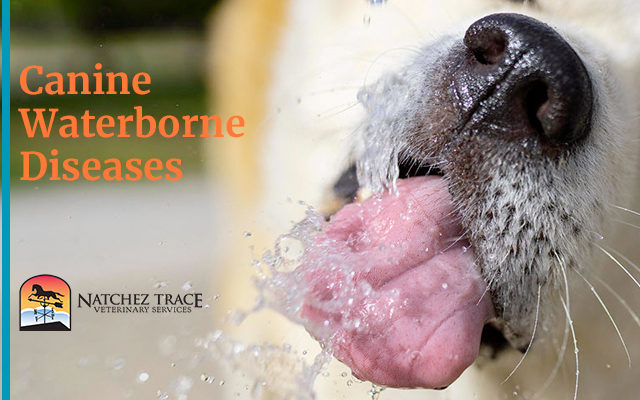Several waterborne diseases affecting human beings can also bring harm to our furry friends.
When you let your dog out to romp and roll around the yard, park, or wherever, what is the first thing they do?
They pee, poop, look for other dogs, and go drink out of the nearest puddle, pond, creek, or whatever else holds water.
This is normal dog behavior.
The only problem is, oftentimes these water-holding areas also harbor infectious agents.
There are many waterborne diseases dogs acquire from standing water and the two most common we see are Giardia and Lepto.
Giardiasis
Giardia is common.
In fact, it is so common that we see a case every two to three days.
Giardia causes raging diarrhea, dehydration, and pretty intense morbidity.
The most consistent clinical sign is watery, and I do mean watery, diarrhea.
It looks like brown water shooting out of your dog’s rear end.
For more in-depth info see below:
Leptospirosis
We don’t see leptospirosis as much as giardia.
However, this waterborne disease is a bad one and requires pretty intense treatment to cure.
Clinical signs are variable; however, the most common clinical signs are:
- Lethargy
- High fever
- Jaundice
- Muscle tremors
- Increased drinking and urination
- Acute renal failure.
Some dogs can acquire this bacterial infection and clear the infection on their own.
Some dogs, however, cannot spontaneously clear the infection and often become extremely sick requiring intensive therapy.
Tips Regarding Giardiasis and Leptospirosis
- Don’t let your dogs drink standing water. Tough to do but worth the try.
- Vaccinate high-risk dogs for leptospirosis for farm dogs and hunting dogs.
- Remember these diseases are zoonotic-transmissible to humans
A Note on Vaccination
I only vaccinate dogs against leptospirosis if there is a high probability of exposure.
The vaccine is marginally effective and carries some significant potential side effects.
Owners must be aware of the risk of vaccination.







